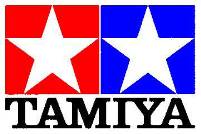Ken Tyrrell never shied away from trying out new ideas and when Harvey Postlethwaite and George Ryton delivered the 020 it was immediately clear that once again new design boundaries were being further explored at Tyrrell.
The 018 was a disappointment to the Tyrrell team so Postlethwaite and aerodynamicist Jean-Claude Migeot set to work to improve the aerodynamic efficiency of the chassis. Ground effect designs had been banned by the FIA during the 1980s but the under car airflow remained important. The stepped chassis undertrays and large rear diffusers meant much of an F1 cars downforce was still generated by the low-pressure air mass underneath the car. What Postlethwaite and Migeot realised was that this airflow was seriously compromised by the low nose position on F1 cars. The generation of low pressures underneath the car is affected by the speed of the air passing below the undertray. Low nose cones were pushing air sideways and upwards over and around the cars' upper bodywork, therefore reducing the airflow under the car. Postlethwaite found that raising the nose increased the volume of air that was able to pass under the car and more air passing underneath means it moves faster and creates even lower pressure, as such it increases down force. The problem is when you raise the wing, that works at its best close to the ground, it loses some efficiency so these conflicting requirements led to the design of the 019's distinctive high nose and anhedral front wing.
The 020 built upon the experience of 019 development. Aerodynamically it was clean and looked purposeful. The team were able to use the same Honda V10 engine previously raced by McLaren in 1990 so they had good power, this being part of a deal that had seen Japanese driver Satoru Nakajima join the team the year before.
Stefano Modena scored 10 points in 1991. A 4th in the US GP early in the season was followed a little later by a 2nd place in Canada, but he had to wait till the end of the season for any more points, a 6th in Japan. He retired seven times and the rest of his finishes were much further down the field. Nakajima’s 2 points for 5th place in the US GP helped Tyrrell scored 12 points and finish 6th in the Constructors Championship. Somehow all the promise went unfulfilled.
The design trend was set though and the teams with the big budgets soon had cars sporting high noses and dropped front wings. All the F1 cars since the mid 1990s have had the high nose, and aerodynamics have become the all important area of car design.
1/20th scale kit.
Built by Ian.


Another model made during the early 1990s that we can learn a lot from now.
It is all brush painted with Humbrol enamels but the main body colour is a mix of gun metal, silver and gold. When you have to mix a colour always ensure you mix more than enough to do the whole job, if you don't it is most unlikely you will be able to get the exact match again, something Ian found out when he ran out of paint before the engine cover could be done. Although close it is noticeably different in shade to the main tub.
The difference in colour of the decals is where air is trapped underneath the decal in places where it hasn’t settled to the body contours. Now that we have decal softening solutions this is rare occurrence and easily rectified but back then they were only just about coming on sale and Ian didn’t know about them.
Also very noticeably is the damage done but time and dust. Models are very hard to keep clean as they are easily broken but every effort to avoid dust getting at the paint finish is important. Humbrol enamel paints once dry are quite hard and resist dust but some of the other paints are not. In this case the problem was coating the model with Humbrol "clear cote". The model looked great at first and the "clear cote" does help protect the decals, but it is very soft and dust seems to eat it’s way in and become impossible to remove.
At the time Ian was very pleased with this model. Then he went to the International Plastic Modellers Society “Nationals” show, (then at Donington) and saw the work of the members of the then Scale Formula Club, a group dedicated to racing car modelling, he was awestruck and thought “I could never do that”.
After the initial shock and awe, depression set in and Ian wondered how they did it. Next time he saw them he asked....Halfords car paints, it’s easy they said.... They were right and Ian’s modelling took off. The thing you need to remember here is that the vast majority of modellers are ordinary people only too willing to help, so if you can get to model shows meet people and join local clubs you will find all sorts of ways to improve your modelling skills.
RETURN TO -
